After we left Naples, we ventured to Messina on the island of Sicily. While I ventured ashore, Janeen had a spa day. In Messina we really wanted to visit the Regional Museum where a couple of Caravaggio paintings live, but unfortunately the museum was closed on Mondays! As a result, we didn’t spend as much time in Messina as it might have deserved. We will just have to come pack another time. After Messina, the trip took us back to Malta where we have to confess, we didn’t get off the ship – after all, we had spent several days in Malta previously and having a day of rest was needed.
Once we left Malta, we headed to North Africa – specifically Tunisia and the town of Tunis.
Tunisia, officially the Republic of Tunisia, is the northernmost country in Africa and bordered by Algeria to the west and southwest, Libya to the southeast, and the Mediterranean Sea to the north and east. It features the archaeological sites of Carthage dating back to the 9th century BC, as well as the Great Mosque of Kairouan. Known for its ancient architecture, it covers 63,170 sq miles, and has a population of 12.1 million. Tunis is the capital and largest city of the country, and our port of call for the day.


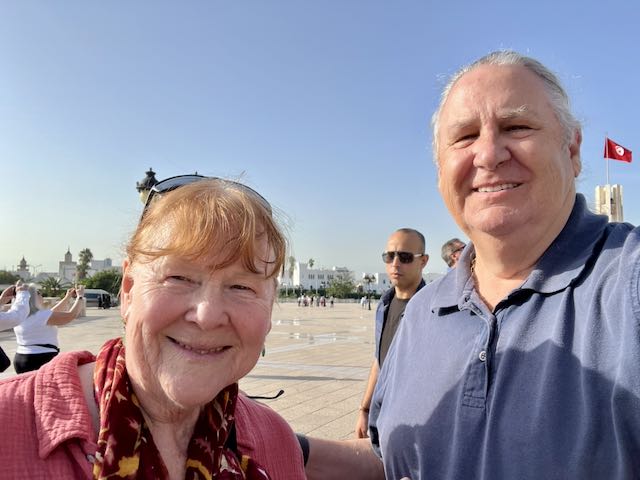
Flowers are always nice – The National Monument of the Kasbah – On the square.
Beginning in early antiquity, Tunisia was inhabited by the indigenous Berbers. The Phoenicians, began to arrive in the 12th century BCE, settling on the coast and establishing several settlements, of which Carthage emerged as the most powerful by the 7th century BCE. The descendants of the Phoenician settlers came to be known as the Punic people. During our visit, we stopped at the only remaining Punic site on the island. The Punic Site appears to be a sanctuary and necropolis as a large number of children’s tombs have been unearthed. The Punic peoples didn’t survive – only leaving the graves of their children, many of whom may have been sacrificed to the glory of their “god”.
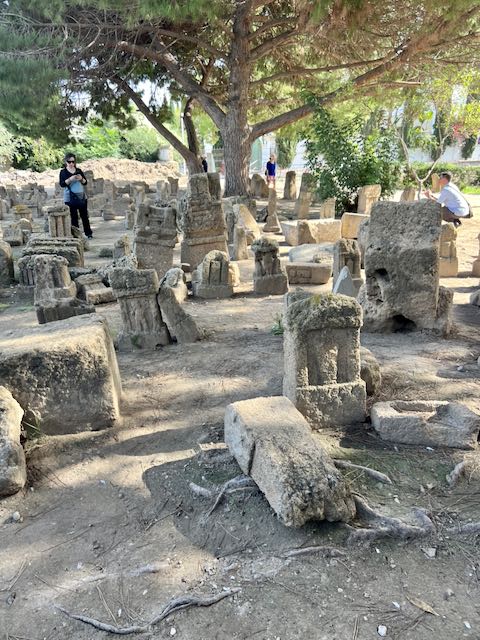

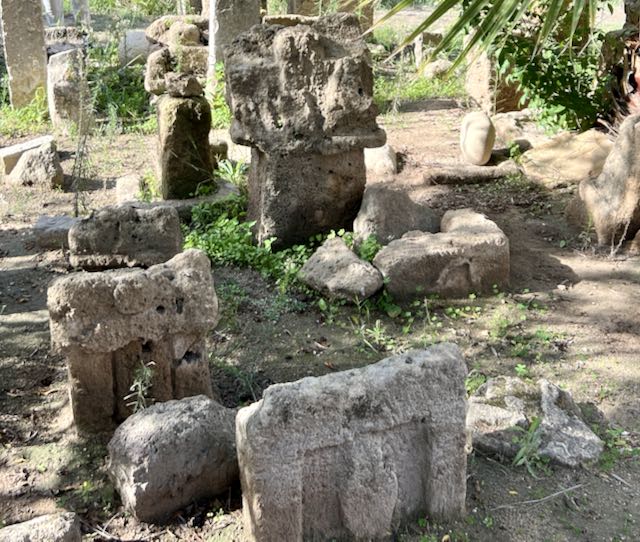
These are the remaining stones from the Punic site. Most are ‘head stones’ for the graves they covered,
Ancient Carthage was a major mercantile empire and a military rival to the Roman Republic until 146 BC when it was defeated by the Romans who occupied Tunisia for most of the next 800 years. The Romans introduced Christianity and left architectural legacies – including a major ‘bath’ complex which we visited.
This archeological park owes its name to the most famous public baths in Africa. This monument was built in the 2nd century AD (the works started under the rule of Emperor Hadrian and were completed under the rule of Antoninus Pius).
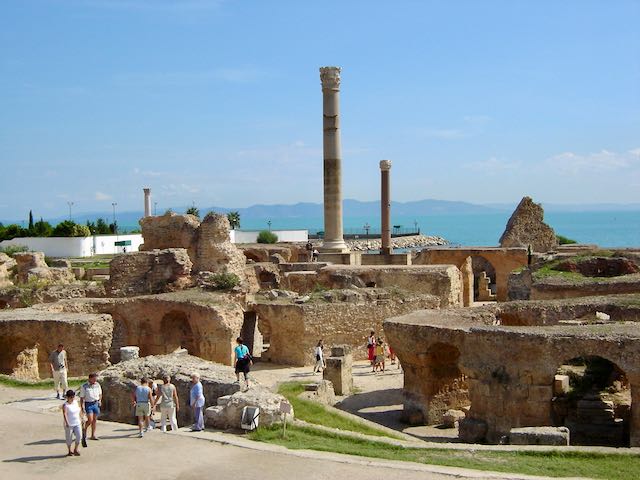
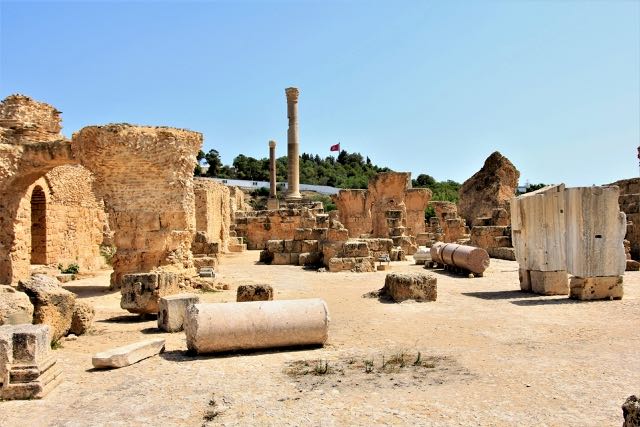
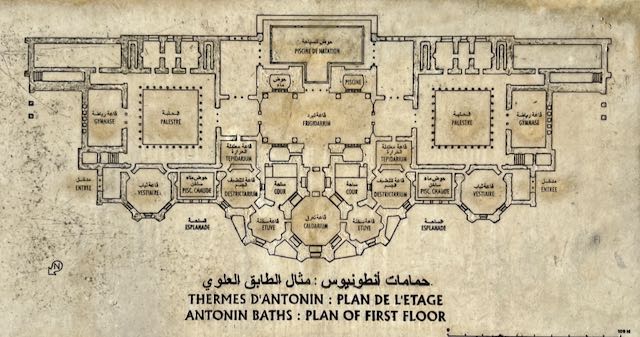
Nowadays, the only thing that has remained from this building is its basement. In the old times, the first floor used to provide two symmetrical spaces, with an axis, on both sides, presenting a hot room, a cold room and an open-door swimming-pool overlooking the Mediterranean Sea.

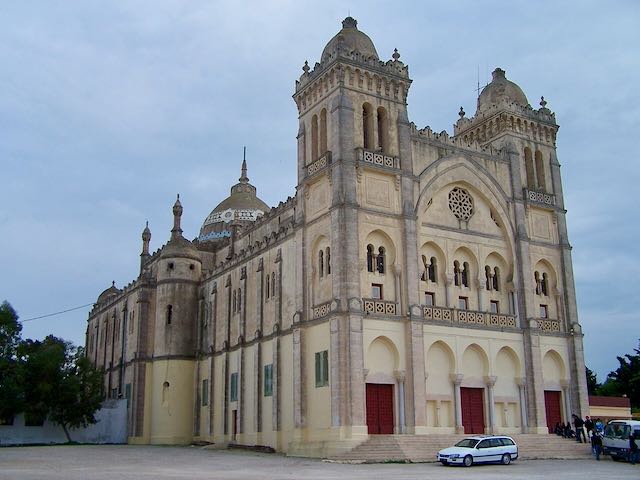
In the 7th century AD, Arab Muslims conquered all of Tunisia. By around the 15th century, the region of modern-day Tunisia had already been almost completely Arabized, establishing Arabs as the demographic majority of the population. Then, in 1546, the Ottoman Empire established control, holding sway for over 300 years, until 1881, when the French conquered Tunisia. In 1956, Tunisia gained independence as the Tunisian Republic. In 2011, the Tunisian Revolution, was triggered by general dissatisfaction with the lack of freedom and democracy under the 24-year rule of President Zine El Abidine Ben Ali. The President was overthrown and this became the catalyst for the broader Arab Spring movement across the region. Free multiparty parliamentary elections have been held and Tunisia since this happened and Tunisia is considered the only democratic state in the Arab world.

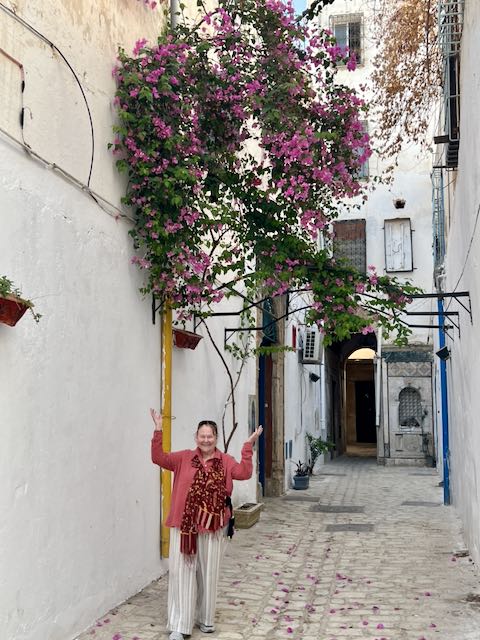
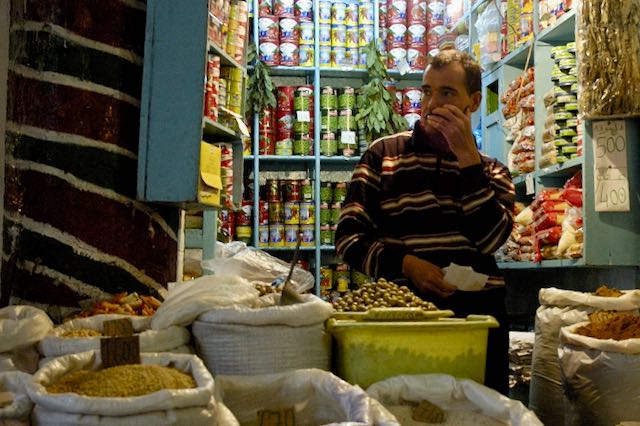
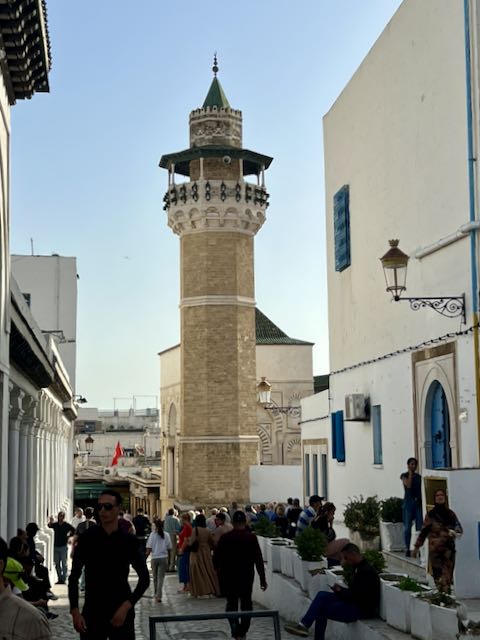
Our tour included walking through wonderful alley ways past any number of shops, a number of mosques and any number of lovely vistas. In one shop there was a woman hand tying a rug – all of which she was doing without a pattern on view or a plan. This is also the shop where we purchased several items for Janeen which involved much bargaining (Clearing the stated price was just the starting point!)
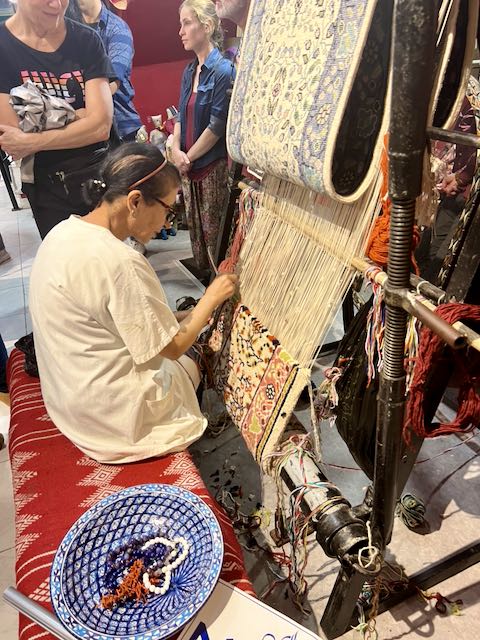
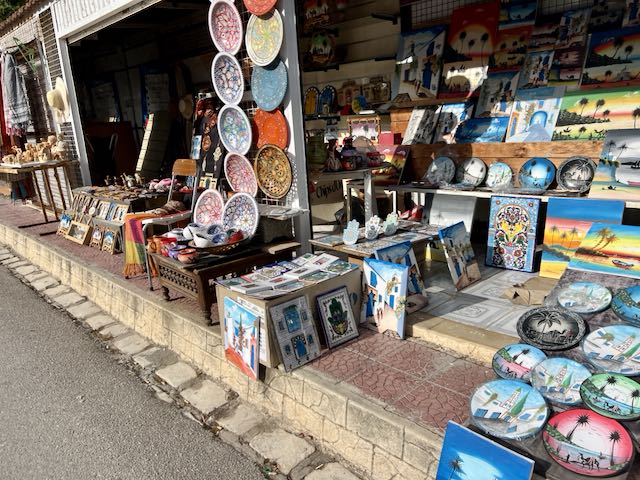
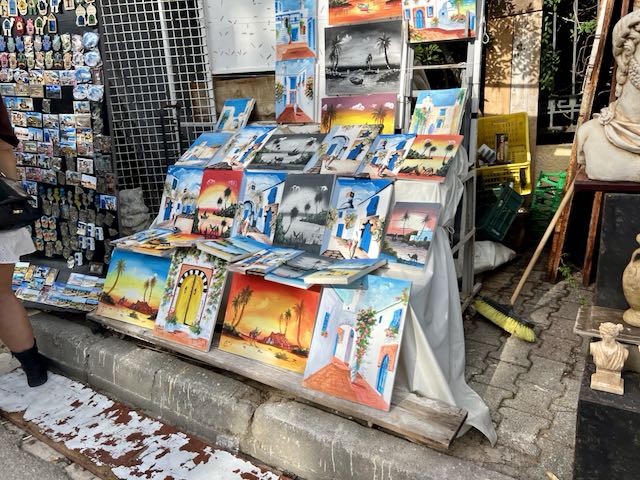

All in all, it was a lovely overview of this part of the world.
Sorry you two missed Caravaggio in Messina, but Oh the richness of what you did see ! Wonderful photos, David. One wants to walk right into what you are photographing. We are down to the serious part of our move. Packers come 11/9, Movers 11/11. We will reconnect in a week or so. 🍁
Thank you for the kind words. We are having a grand adventure for sure with lots more to come.
I saw rug tying like that in Cancun. Amazing what they do. Creativity is certainly all around us.